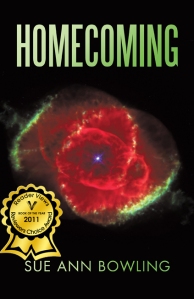 It’s that time of year again. Time to get out the plastic and the floating row covers, and pack water-filled bottles among the rows of plants. It’ll be a while before the orange growers have to get out their smudge pots and fans, but here in Alaska the season for radiation frosts has started, and anyone with a growing garden is hoping for cloud cover at night.
It’s that time of year again. Time to get out the plastic and the floating row covers, and pack water-filled bottles among the rows of plants. It’ll be a while before the orange growers have to get out their smudge pots and fans, but here in Alaska the season for radiation frosts has started, and anyone with a growing garden is hoping for cloud cover at night.
Why?
Anything not at absolute zero (-460°F) radiates energy. The efficiency of this radiation varies, but most solids and liquids other than metal are very efficient. Most gasses are very inefficient, the so-called greenhouse gasses being exceptions. At the temperatures we live at, most of this radiated energy is in the thermal infrared.
The energy has to come from somewhere. Something like pavement may get its energy from deeper down, by conduction. Ever seen those warning signs that ice may form on bridges? That’s because a bridge doesn’t have as much thermal mass as a road on normal ground, so it can lose more energy and get colder at night.
Surfaces also gain energy from radiation. We’re all familiar with the sun’s radiant energy, or the energy of a fire, which we can feel on our faces. But building walls, for instance, also radiate in the infrared. If the radiating surface is about the same temperature as our skin, there is no net energy loss or gain, so we don’t feel the exchange as warm or cold.
Conduction from (or to) the air also has to be taken into account.
One final piece of the puzzle: surfaces radiate energy at a rate proportional to the fourth power of the absolute temperature and also proportional to the efficiency with which they radiate. In practice, energy radiated increases with temperature.
On a cloudy night, the clouds radiate to the ground at the temperature of the cloud base. Unless the cloud base is below freezing, this helps the temperature near the ground stay above freezing. But what if there are no clouds at night?
It depends on the temperature of the air aloft, and the amounts of carbon dioxide and water vapor in the air. The water and carbon dioxide radiate energy down to the ground, but not terribly efficiently. It the air is cold and dry, objects without much thermal mass, such as leaves, may radiate so much more energy than they receive that they cool below freezing even while the air temperature is above freezing. This is a radiation frost.
Of course the air is cooled by the cooling leaves and ground, so often the air temperature also goes below freezing. But the leaves freeze fist.
Why do plastic or row covers help? With a cover, the energy radiated comes from all of the air trapped below the cover, not just from the leaves. Cooling is slower. It can be made even slower by putting something with high thermal mass, like bottles of water, below the cover. Keeping the air mixed with fans also helps, because since the air is cooling from the bottom up, mixing warmer air down from aloft helps keep the plants warm.
I’m keeping an eye on the weather forecasts – especially clouds!







 Buy Homecoming from iUniverse
Buy Homecoming from iUniverse
















Yesterday, I watched the most intense thunderstorm I had seen in years. I know it’s unrelated to gardening, but oh, the light show was so intense!
Good explanation for gardeners, Ann!
It’s past thunderstorm season here for the most part. Not enough solar heating of the ground, which is where energy for thunderstorms comes from.
Interesting, Sue. I know there’s a method for predicting frost using the wet bulb and dry bulb method.
Alaska? It’s such a big world in spite of how small it’s become–if that makes any sense to you. I garden. I watch the weather. But, rarely do I think about the growing seasons in other latitudes. It was 85F here today, with thunderstorms. Isaac is doing a big spin. But, we need the rain. No complaints here. And this time of year, the local farmers all start to say “Need some rain before it winters’ up.” 🙂
Very big–the east-west and north-south spread are about the same as the 48 states, though of course a lot of that is island chains. Interior’s still a little warmer than the south central, but we’ll be colder in winter–we have a much more continental climate.